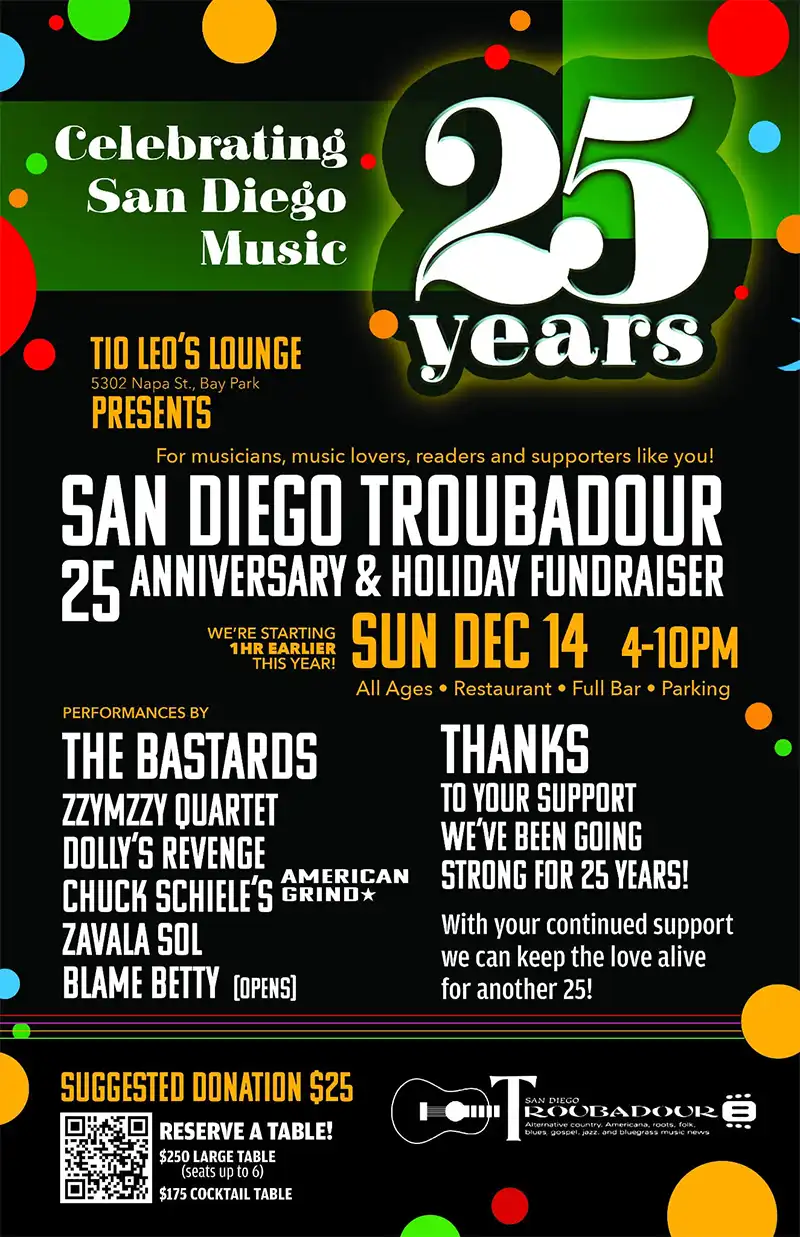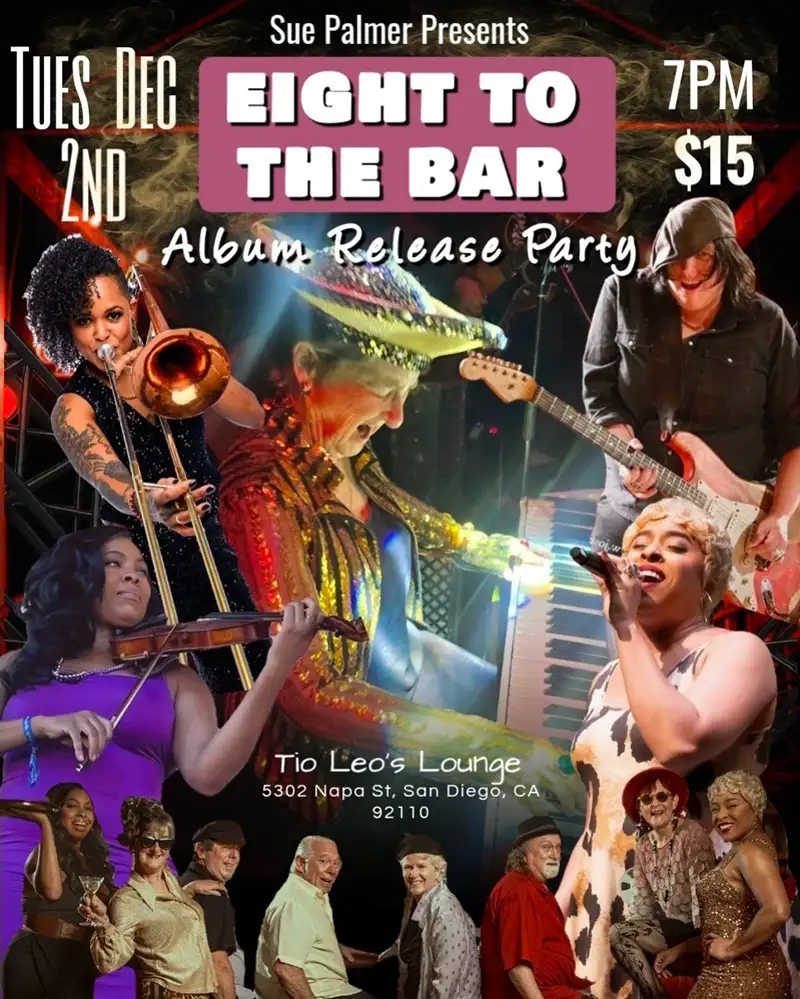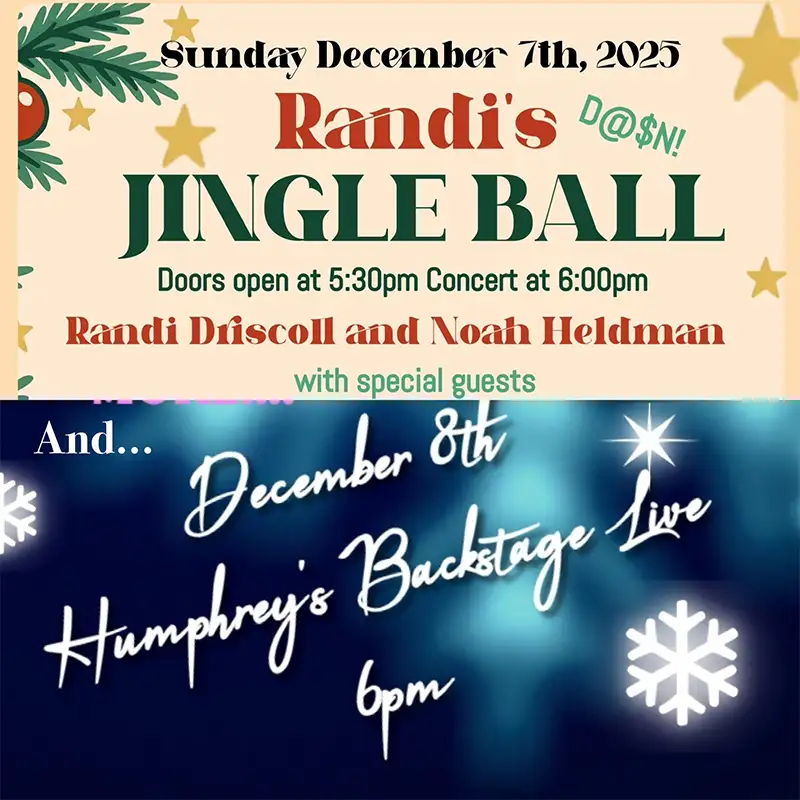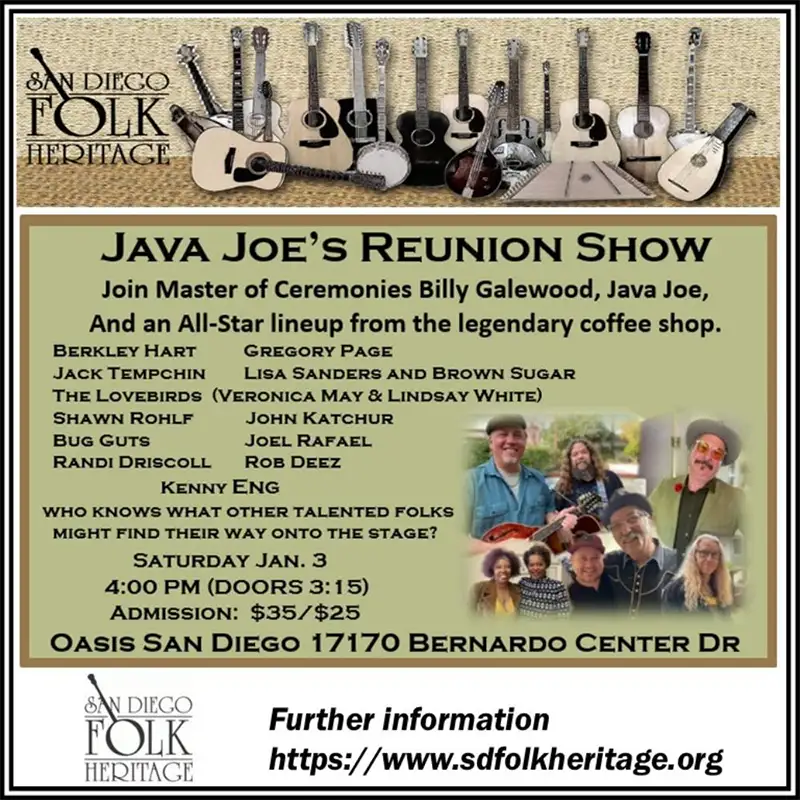Featured Stories
Fortunately, We Failed
How three incompetents tried to change San Diego’s music scene, and the one idea worth saving from that fiasco.
Twice, San Diego attempted to limit entertainment in coffeehouses: once in 2000 and again in 2007, with laws that would have made coffeehouses 21 and up only if they had live shows of any kind; they also required major structural remodels to make them more like nightclubs instead of the simple sites they’ve ever been.
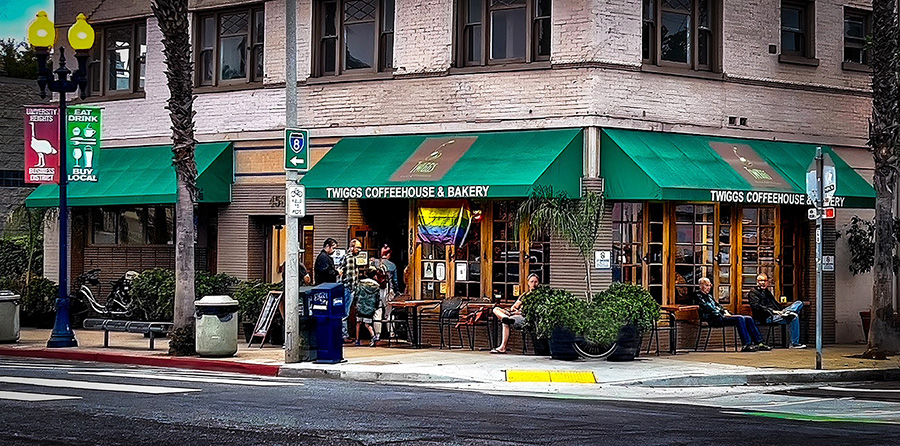
Twiggs fell victim to the noise ordinance, so they had to move the music across the street. Photo by Chuck Lapinsky.
Musicians, performers, and cafe operators raged against the proposed laws and filled public hearings at the city council and SDPD with protest. Both times the proposed laws were scaled back from the original draconian disasters to something only moderately disgusting, dispiriting, and destructive to homegrown culture. Those efforts made great copy for the news orgs then, and even gained national attention for 15 minutes, stimulating creatives and business people toward compromises with bureaucracy that centered mostly on “noise” complaints and how to avoid them.
Noise, according to the City of San Diego, is any complaint arising from sound that exceeds 43 decibels at more than ten feet from the source. Forty-three decibels at ten feet might be the sound of someone reading aloud, or actors on stage. Forty-three decibels isn’t any too “loud” compared to traffic noise, planes in a flight path, an espresso machine making doubles, or motorcycles being revved by knuckleheads in desperate bids for attention, but it’s what San Diego uses for its measure. And noise that exceeds that limit can get a place shut down after repeated complaints. As one poor cafe operator found out, all it takes is one constant critic to make a handful of complaints in a short time for City to yank its operating permits. It’s a fine tool for keeping things orderly, especially for the one measuring the noise.
During this sad madness, it so happened that the director of the San Diego Food and Beverage Association, a fellow named Steve Zolezzi, myself, and a leading SDPD vice cop named Chris Ball had a few round robin discussions over phone and email about how to harmonize sound, music, performance art, and coffeehouses. We were earnest in our desire to come to some kind of workable solutions. Ball wanted safer spaces and fewer headaches for SDPD, Zolezzi wanted more business growth and opportunity for hospitality businesses in San Diego, and I had a great interest in protecting the coffeehouses that supported my newspaper, The ESPRESSO, and supporting the creatives of all kinds who virtually lived in them. We were very earnest. We were also completely unsuitable for the task.
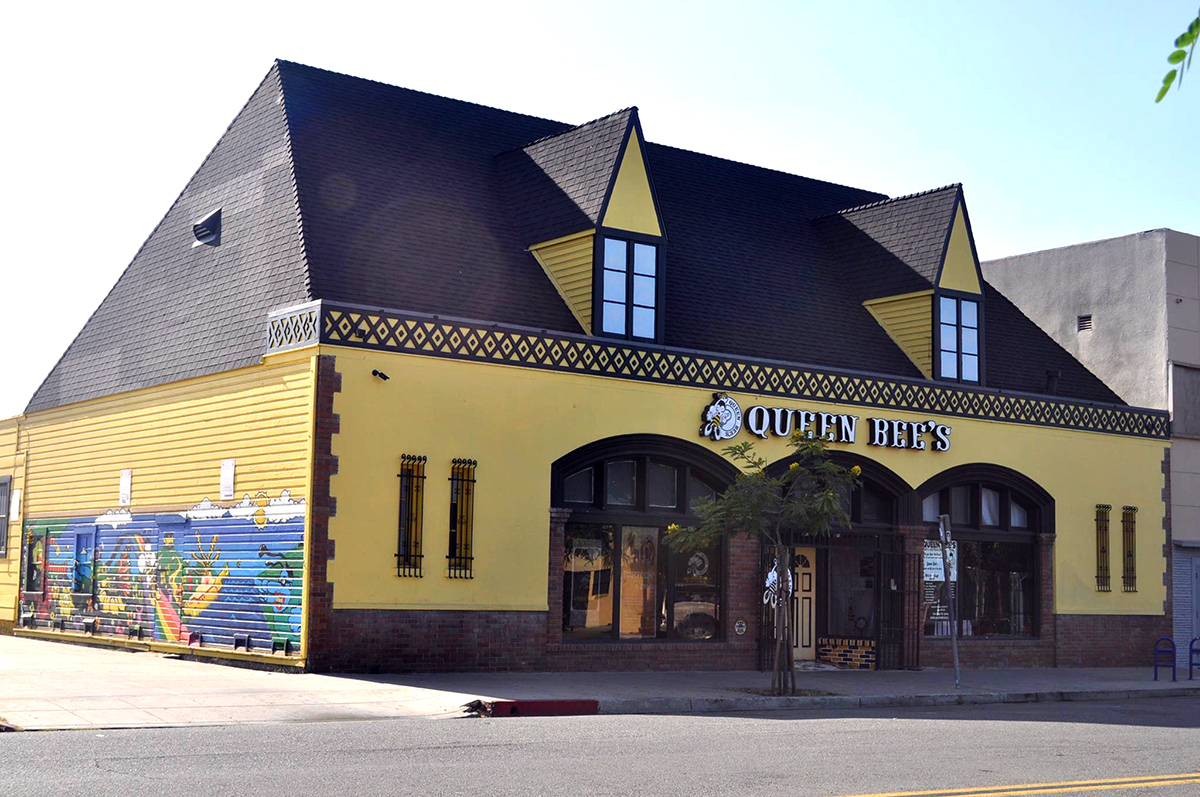
Alma Rodriguez from Queen Bee’s received multiple complaints from the City.
None of us were musicians, for starters. Nor were we sound engineers, performers, set designers, or anything relevant to what we assumed we might regulate. Nonetheless, with zeal in our hearts, we blundered forward—first, with proposals for raised stages, to be built of wood and able to be taken down and put away when not needed. Those wooden stages were supposed to be big enough to fit three (not five, six, or nine) musicians. The music would be limited to acoustic tones only, no amps or electronics. There were to be sound absorbing curtains on walls opposite the musicians and other passive means to keep the sound level at the magic, marginal limit of 43 decibels ten feet from the door of the cafe.
Had these elements gone into Code—become law—it would have made acoustic trios almost mandatory in coffeehouses offering live music. It might have defined “Coffeehouses” separately from other kinds of musical venues in San Diego and perhaps carved out a niche for them unique in local law. Whether other club and venue operators would have stood quietly by and not use their lobbying power against new, cheaper-to-operate venues that could damage their business was anyone’s guess. In the end, all our efforts went for naught because changes in business, music, and media combined to drive cafe operators away from music entirely.
The rise of Starbucks and its operating methods—which avoided entertainment entirely—was lauded by coffee trade and hospitality business media. Suddenly, a mainstay of coffeehouse operations for centuries on several continents was no longer recommended—and many operators dropped entertainment from their businesses permanently. Those media recommended cafes follow Starbucks’ lead and make maximum money from every square foot of space daily, and many of those operators who saw the mighty mermaid’s success followed along without a second thought. It’s hard to argue with success, no matter that independent businesses are as different from fast food as day is from night. Many new independent business operators here rarely gave a thought about why some cafes have lasted for generations, and how music and other entertainment helped make that longevity possible. It proved that not only is it hard to argue with success, but it’s virtually impossible to argue with a solid business media story line.
At the same time, copyright security organizations like ASCAP and others became more prominent in San Diego and aggressively went after businesses of every kind that used music to further their profits. It didn’t take long for cafe operators here to drop music after word of serious threats to their business became common—and confusion about what could be performed and how were almost universally met with rejection of art and music by business owners who didn’t want another headache, let alone a lawsuit. Who could blame them? Running a coffeehouse isn’t easy and being labelled a villain for hosting musicians playing covers wasn’t a desired option for anyone. Musicians here could suddenly count on one hand the number of cafes that offered a stage for them, and all the crafting that the three of us tried went for naught. Music, it seemed, dried up.
But even now, with the impact of a pandemic behind us that reshaped coffeehouse operations, venues, and entertainment, which sees coffeehouses operate with strange hours that close them daily by four o’clock, there still might be a place for music in them—free from hassles by City and copyright bounty hunters. Original music might be the key to rekindling that particular culture in cafes; copyright holders performing their own property make copyright security orgs redundant, and once again, as it has for centuries everywhere, music might lend longevity to coffeehouses. To my knowledge, none of the rigamarole that the three of us cobbled together ever became law, though there was agreement that such as we envisioned would likely dodge City noise issues. Is that a basis on which a music path can be built? Who would try it? You?


